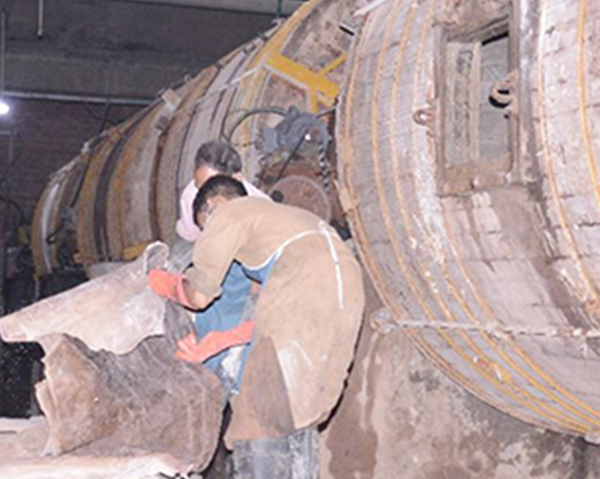Soaking or “Rehydration of Raw Hides” is the first and one of the most sensitive stages in the leather tanning process in Iran. This step is carried out with the aim of restoring the natural moisture of raw hides and preparing them for subsequent stages such as liming, pickling, and tanning. In Iran, due to climatic diversity and widespread livestock breeding, hides usually arrive at tanneries from different parts of the country under varying conditions—some fresh, while others preserved through salting or drying to maintain quality during transport and storage.
In this stage, the hides are placed in large industrial drums or tanks filled with clean water and a combination of specialized soaking agents. These include wetting agents, surfactants, and mild detergents, whose role is to separate surface impurities and remove residual salt and organic matter without damaging the skin fibers. In Iranian tanneries, formulations are often based on eco-friendly compounds and locally adapted practices, ensuring both the preservation of hide quality and the minimization of environmental impact.
The importance of this stage lies in the complete removal of physical contaminants such as soil, blood, animal waste, and particularly the residual salt from the curing process. Retained contaminants can cause staining, uneven dye absorption, or even reduce the final strength of the leather. For this reason, experienced Iranian tanners carefully adjust the temperature, soaking time, pH, and chemical composition of the soaking solution according to the specific type of hide—cow, calf, goat, or sheep.
Sheepskins and goatskins sourced from nomadic and rural areas of Iran, due to their delicacy and fine texture, require gentler treatment and shorter soaking times. In contrast, cowhides and buffalo hides obtained from industrial or semi-industrial farms, because of their greater thickness and density, usually require longer rehydration periods to fully restore their natural condition.
This stage also provides an opportunity to begin the disinfection process of hides, preventing bacterial growth and the development of unpleasant odors. The use of controlled temperatures and solutions with appropriate pH not only protects the fiber structure but also prolongs the quality and durability of the final leather.
Key characteristics of the soaking process in Iran’s leather industry:
- Complete restoration of moisture to salted or dried domestic hides
- Thorough removal of surface impurities, blood, soil, and excess salt
- Use of eco-friendly and locally formulated chemical compounds
- Precise control of temperature, pH, and soaking duration based on hide type
- Specialized methods for delicate nomadic hides and thick industrial hides
- Initial disinfection to prevent bacterial growth and unpleasant odors


No comments yet.